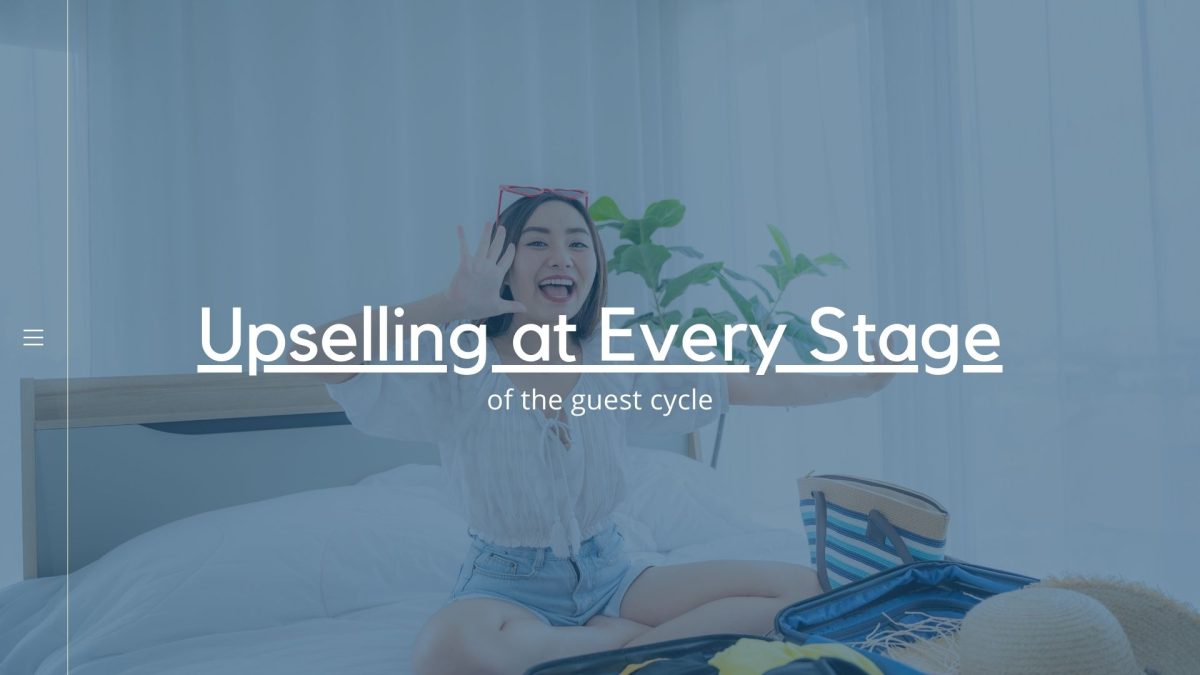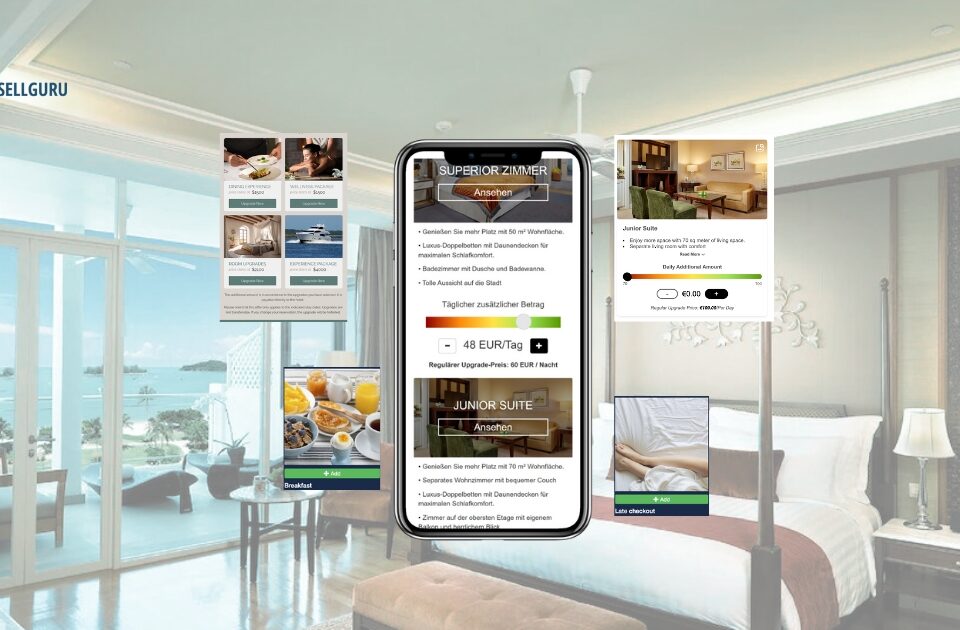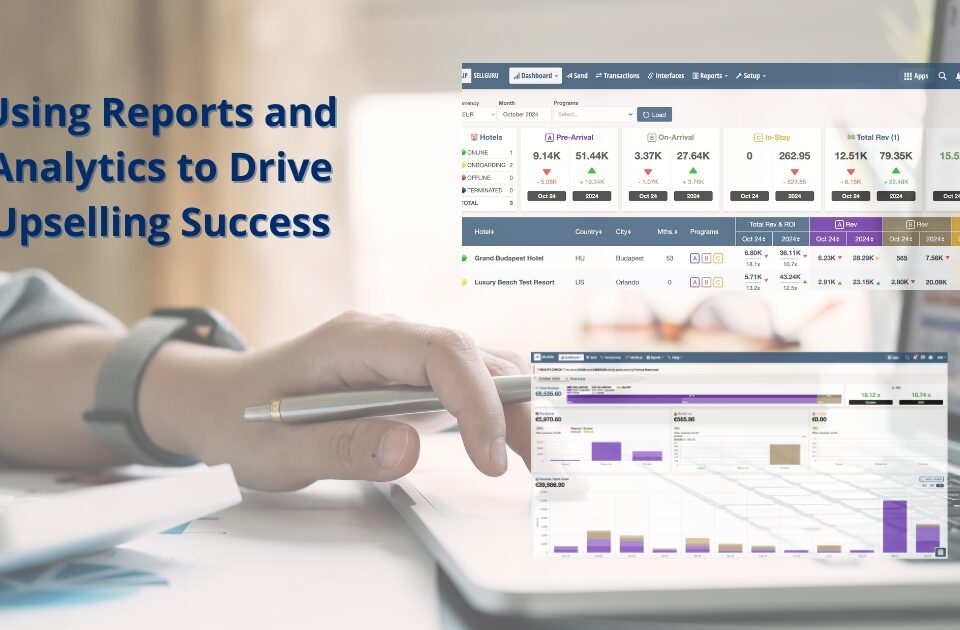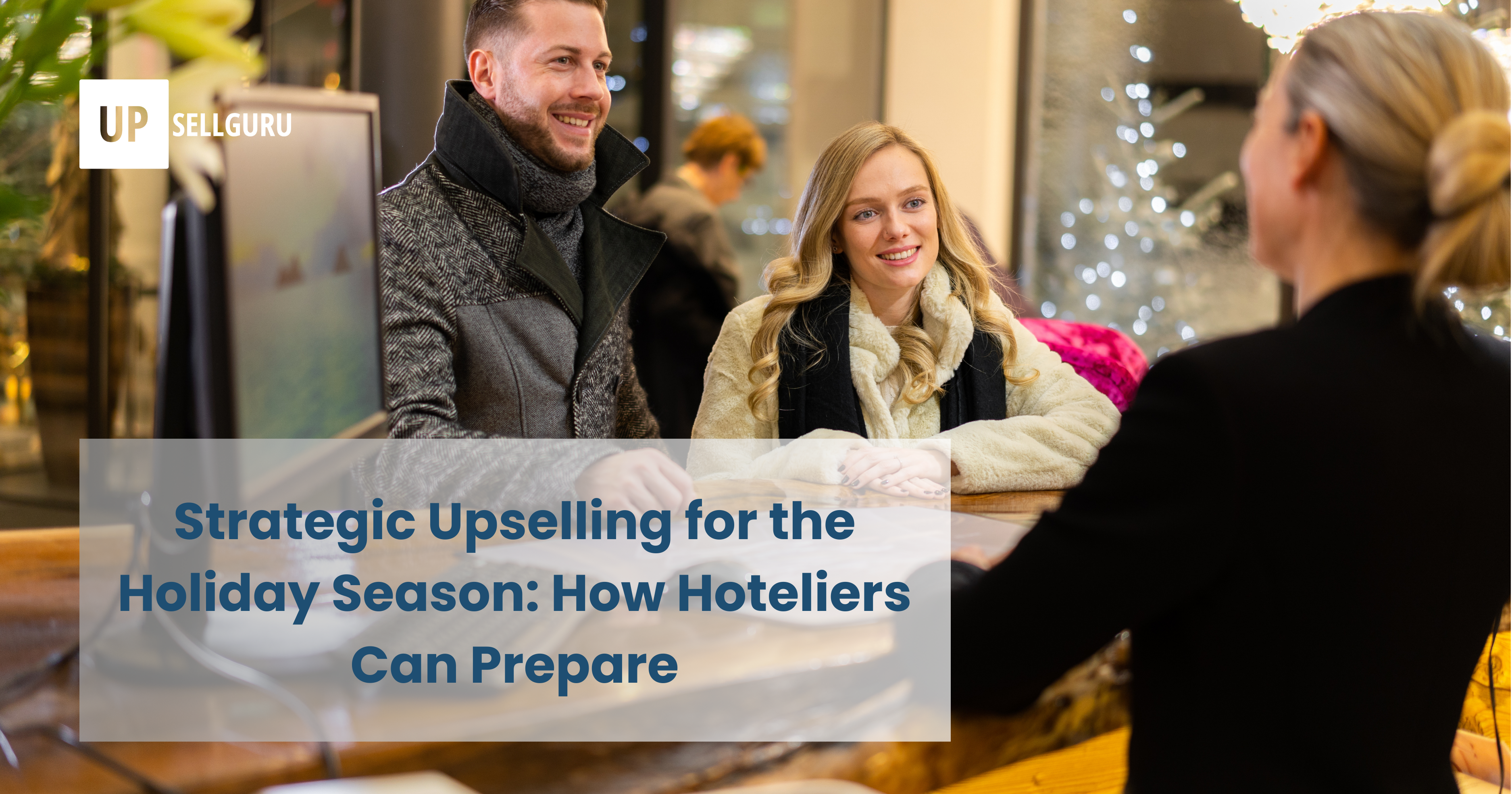Upselling at every stage of the guest cycle

Online vs. Offline Upselling – Show Me the Numbers!
July 12, 2021From airlines to fast food restaurants, all kinds of businesses use up-selling and cross-selling to increase their business’ growth and profitability. However, these are not just tools to boost profits, but also a way of increasing customer satisfaction as you are enhancing their experience. There areseveral techniques and best practices that can be implemented very simply and are profitable – in every step of the guest cycle.

1. Before the booking process
Before you start selling your products to your customers, identify your up-sell and cross-selling opportunities and make sure they are presented in an attractive way.
Structure your rates so upgrades have a reasonable value
The first step is to identify what a reasonable upgrade value for your higher room categories are. Are you offering your guests a good value for the extra amount you are asking them to pay? If your customers are generally just booking your lowest room types, it is an indication that the upgrade amount is too high. Try adding some extra value (for example, late check-out or free mini-bar) or lower the upgrade fee to see the difference. Another option is to ask your customers what an upgrade would be worth to them…but more on that later.
Keep your room details and descriptions up-to-date
One reason why many guests tend to book the lowest room category is caused by the lack of effective room descriptions and outdated, unattractive photos. Make sure to adequately differentiate each room category pointing out their benefits. Don’t just list down facts about the room, but try to sell it using words that are appealing and alluring. Use sentence structures that make your guest picture themselves in the room (“You will be amazed by the views of …”), and use as many high-quality room pictures as possible.
2. During the booking process
This can be tricky: on the one hand, you want to give the buyer as many choices as possible to find the right offer, room and amenities, but again, you don’t want to overwhelm and confuse them with too many offers.

Do you want fries with that?
Have a booking process (online and offline) where different room/rate combinations are offered to the guest in a clear and well-structured way alongside reservation add-ons such as meal plans, transportation, and amenities. Differentiate add-ons that have to be added during the booking process and those that can be offered at a later point (pre-arrival and check-in). Don’t deny guests extra services and amenities that may need to be communicated before checking-in (hotel transportation, extra room amenities, etc.). Adding some of these add-ons to the pre-arrival stage can be a good idea.
3. Pre-arrival stage
Now that the customer is already yours, it is the most opportune time to upsell. The probability of selling to a new prospect is 5–20 percent, while the probability of selling to an existing customer is 60–70 percent.
Use the right technology
Having an automated online upsell system in place is here the key. Such systems allow hotels to offer their guests upgrade opportunities to higher room categories and allows hotels to sell add-ons at the pre-arrival stage.
Make your offers personalized and targeted to the right guest. The pricing of your offers is also key. A dynamic bidding system helps to convert and adds excitement for your guests to this process.
By letting your guests name their own price for a room upgrade, it’s a great way to find out how much it is worth to them, yet alone to increase upselling revenue.
4. During Check-In
For most of your reservations, this will be your first face-to-face interaction with your guests, which can create a more personal upsell situation.

Training
Training and education can help staff members understand the value of products, services or solutions offered to guests. Frequently tour your rooms with your staff so they are familiar with them. Enforce the front of the house team to always ask whether customers are interested in room upgrades or additional services or goods.
One way to motivate the staff is by creating a friendly competition between the agents and/or by giving financial incentives. For walk-ins, train your staff to sell higher room categories instead of just offering the lowest priced accommodation by describing the room and amenities instead of just naming the room type (this also applies to hotel reservations agents).
Pre-arrival and front-desk up-selling can also really compliment each other. Check out our article on Online vs. Offline Up-selling! Here
5. During the Stay
Once your guests are already enjoying their stay, they will be typically more open to opportunities to enhance it.
Interact with your guests
Promote your facilities and services through interactions with hotel staff, hotel directory (in paper or digital), direct messaging (SMS or chatbot), signs in the elevators, on social media, etc. Make sure the guest knows everything you have to offer without them having to ask or look for it.
We would not be called UpsellGuru if we did not have a solution for that as well. Check-out our In-House Up-selling page for more information on digital directory and in-house communication solutions.
6. During Check-Out and Post-Stay
Upselling and cross-selling do not end with the guest stay – there are still plenty of opportunities during check-out and after their departure.
Don’t let them forget you
During the check-out process, make sure to find out; 1) if you can offer them transportation to the airport; 2) if they are heading somewhere that you may have a sister/brand property; and 3) whether they’re returning to your location any time soon. Invite them back with discounted stays or amenities for the next visit. Ask them to join your loyalty program or to join your mailing list. There are many ways to strengthen the guest relationship and to keep up-selling to them in the future.
Upselling has a place throughout the guest cycle. If done right, up-selling is good for your guests and good for your property’s bottom line.





